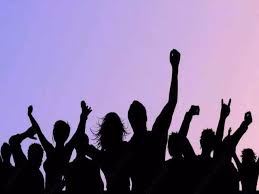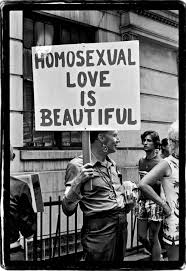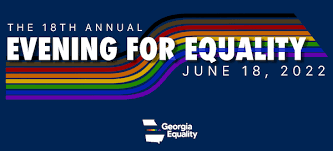Understanding Bisexuality: Breaking Stereotypes and Embracing Diversity
Bisexuality is a sexual orientation that often remains misunderstood and misrepresented in society. It is crucial to shed light on this diverse and valid identity, debunk misconceptions, and foster a more inclusive understanding of bisexuality.
At its core, bisexuality refers to the capacity for emotional, romantic, or sexual attraction to both males and females. However, it is important to recognize that bisexuality exists on a spectrum, with individuals experiencing varying degrees of attraction to different genders.
One common misconception about bisexuality is that individuals who identify as bisexual are simply confused or going through a phase. This harmful stereotype undermines the validity of their experiences and denies the complexity of their identities. Bisexual individuals have a genuine capacity for attraction to multiple genders, just as heterosexuals are attracted to the opposite gender and homosexuals are attracted to the same gender.
Another misconception is the belief that bisexuality perpetuates promiscuity or indecisiveness. This stereotype ignores the fact that being attracted to multiple genders does not determine one’s behavior or commitment in relationships. Bisexual individuals are fully capable of forming loving, committed partnerships just like anyone else.
Biphobia is another issue faced by bisexual individuals. They often encounter prejudice both within heterosexual communities and LGBTQ+ spaces. Biphobia can manifest as erasure, where bisexuality is overlooked or invalidated within discussions about sexual orientation. It can also manifest as stereotypes such as assuming that bisexual individuals are more likely to cheat or spread sexually transmitted infections.
To create a more inclusive society, it is essential for everyone to challenge these misconceptions and actively support bisexual individuals. Here are some ways we can do so:
- Educate ourselves: Take the initiative to learn about bisexuality from credible sources such as LGBTQ+ organizations and literature written by bisexual authors. Recognize that everyone’s experience with bisexuality may be unique, and avoid making assumptions or generalizations.
- Listen and validate: When someone shares their bisexuality with you, listen attentively and acknowledge the validity of their identity. Offer support and understanding, creating a safe space where they can express themselves without fear of judgment.
- Speak up against biphobia: Challenge biphobic comments or stereotypes when you encounter them. Use your voice to advocate for inclusivity and equality, both within your personal circles and in broader society.
- Amplify bisexual voices: Seek out bisexual individuals’ stories, experiences, and perspectives. Share their narratives to help raise awareness and promote understanding within your community.
- Support bisexual organizations: Donate to or volunteer with organizations that specifically support the bisexual community. By contributing to these groups, you help provide resources, advocacy, and visibility for bisexual individuals.
By embracing diversity in sexual orientation and challenging stereotypes surrounding bisexuality, we can create a more inclusive society where everyone feels accepted for who they are. Let us celebrate the richness of human sexuality and work together towards a world that embraces all identities with love and respect.
5 Essential Tips for Navigating Bisexuality with Respect and Inclusion
- Understand the definition
- Respect individual experiences
- Use inclusive language
- Avoid bi-erasure
- Supportive allyship
Understand the definition
Understanding the Definition of Bisexuality
Bisexuality is a term that refers to the capacity for emotional, romantic, or sexual attraction to both males and females. It is important to recognize that bisexuality exists on a spectrum, with individuals experiencing varying degrees of attraction to different genders.
One common misconception about bisexuality is that it is a phase or confusion. However, bisexuality is a valid sexual orientation just like heterosexuality or homosexuality. Bisexual individuals have the ability to be attracted to multiple genders.
It is crucial to understand that bisexuality does not necessarily mean equal attraction to all genders. Some bisexual individuals may experience different levels of attraction towards different genders, and their preferences can change and evolve over time.
By understanding the definition of bisexuality, we can challenge stereotypes and misconceptions surrounding this sexual orientation. It allows us to create a more inclusive society where bisexual individuals are seen and accepted for who they are.
Let us strive for empathy, respect, and education when discussing bisexuality. By doing so, we can foster understanding and support for all members of the LGBTQ+ community.
Respect individual experiences
When it comes to understanding and supporting bisexuality, one crucial tip is to respect individual experiences. Bisexuality is a diverse and multifaceted identity, and each person’s journey is unique.
Respecting individual experiences means acknowledging that there is no one-size-fits-all definition of bisexuality. Some individuals may experience equal attraction to different genders, while others may have varying degrees of attraction. It is important not to impose rigid expectations or assumptions on bisexual individuals.
Furthermore, respecting individual experiences also involves listening without judgment. When someone shares their personal experience of being bisexual, it is essential to create a safe and non-judgmental space for them to express themselves. Avoid making assumptions or questioning the validity of their identity.
By respecting individual experiences, we can foster an environment where bisexual individuals feel seen, heard, and accepted. This approach promotes inclusivity and allows for a deeper understanding of the diverse range of identities within the bisexual community.
Remember, everyone’s journey with bisexuality is unique, and it is our responsibility to respect and honor those experiences. Let us celebrate the richness of diversity within the LGBTQ+ community by embracing and validating each person’s unique path.
Use inclusive language
Using Inclusive Language: Embracing Bisexuality and Fostering Acceptance
Language has a powerful impact on how we perceive and understand the world around us. When it comes to discussing bisexuality, using inclusive language is essential in promoting understanding, respect, and acceptance for bisexual individuals.
Inclusive language acknowledges and affirms the diverse experiences of bisexual people, ensuring that their identities are recognized and respected. It helps to create an environment where everyone feels valued and included, regardless of their sexual orientation.
Here are some tips for using inclusive language when discussing bisexuality:
- Avoid assumptions: Instead of assuming someone’s sexual orientation based on their current or past relationships, use gender-neutral terms such as “partner” or “significant other.” This allows individuals to define their own identities without being boxed into societal expectations.
- Respect self-identifications: Bisexual individuals may choose different terms to describe their own experiences. Some may prefer the term “bisexual,” while others may identify as “pansexual” or use other labels. Respect their self-identifications and use the language they prefer.
- Don’t perpetuate stereotypes: Be mindful of the language you use when discussing bisexuality. Avoid using phrases like “going through a phase” or implying that bisexuality is a stepping stone to identifying as gay or straight. These stereotypes invalidate bisexual experiences and perpetuate misconceptions.
- Use inclusive pronouns: When referring to hypothetical or unknown individuals, consider using gender-neutral pronouns such as “they/them.” This acknowledges that attraction can exist beyond the binary concept of gender.
- Educate yourself: Stay informed about current terminology related to bisexuality by reading literature written by bisexual authors or accessing resources from LGBTQ+ organizations. Understanding the nuances of language helps foster more respectful conversations.
- Be open-minded: Approach discussions about bisexuality with an open mind and willingness to learn. Recognize that everyone’s experiences are unique and avoid making assumptions or generalizations.
Using inclusive language is a powerful way to show support for the bisexual community and promote understanding among all individuals. By being mindful of the words we use, we can contribute to a more inclusive society where everyone feels seen, heard, and accepted for who they are. Let us embrace the power of language to foster acceptance and celebrate the diversity of human sexuality.
Avoid bi-erasure
Understanding and Addressing Bi-Erasure: Validating Bisexual Identities
Bi-erasure refers to the tendency of society to overlook, invalidate, or dismiss the experiences and identities of bisexual individuals. It is a harmful phenomenon that perpetuates stereotypes and denies the existence and validity of bisexuality. To create a more inclusive society, it is crucial to recognize and actively combat bi-erasure.
One common form of bi-erasure is assuming that bisexuality does not exist or that it is merely a phase. This erases the lived experiences of bisexual individuals who genuinely experience attraction to multiple genders. It is important to acknowledge that bisexuality is a valid sexual orientation, just as being heterosexual or homosexual is.
Another aspect of bi-erasure is the invisibility of bisexuality within discussions about sexual orientation. Bisexual individuals often face challenges in finding representation and acceptance within both heterosexual and LGBTQ+ communities. This erasure can lead to feelings of isolation, confusion, and a lack of support.
To avoid perpetuating bi-erasure, it is essential to take certain steps:
- Educate yourself: Learn about bisexuality from credible sources such as LGBTQ+ organizations, books, articles, and personal narratives shared by bisexual individuals. Understand that bisexuality exists on a spectrum and encompasses diverse experiences.
- Validate bisexual identities: When someone shares their bisexuality with you, validate their identity by listening without judgment or assumptions. Acknowledge their experiences as real and legitimate.
- Use inclusive language: Be mindful of using inclusive language when discussing sexual orientation. Avoid assuming someone’s sexuality based on the gender of their current partner or making assumptions about their preferences.
- Amplify bisexual voices: Share stories, articles, and resources from bisexual individuals to help raise awareness about their experiences. By amplifying these voices, you contribute to breaking down stereotypes and increasing visibility for the bisexual community.
- Challenge stereotypes and misconceptions: Speak up against biphobic comments or stereotypes when you encounter them. Educate others about bisexuality and correct misconceptions to help create a more inclusive environment.
- Support bisexual organizations and events: Contribute to organizations that specifically support the bisexual community through donations, volunteering, or attending events. This helps provide resources, advocacy, and visibility for bisexual individuals.
By actively working to address bi-erasure and validate bisexual identities, we can create a more inclusive society where everyone feels seen, heard, and accepted for who they are. Let us celebrate the diversity of human sexuality and strive for a world where bisexuality is fully recognized and embraced.
Supportive allyship
Supportive Allyship: Standing with the Bisexual Community
Being an ally to the bisexual community means actively supporting and advocating for the rights and well-being of bisexual individuals. As allies, we have a crucial role in creating inclusive spaces and combating biphobia.
Here are some ways to be a supportive ally to the bisexual community:
- Educate Yourself: Take the initiative to learn about bisexuality, its nuances, and the challenges faced by bisexual individuals. Read books, articles, and listen to podcasts by bisexual authors or activists. Understanding their experiences will help you better support them.
- Listen and Validate: Create a safe space for bisexual individuals to share their stories and experiences. Listen without judgment or assumptions, and validate their feelings. Acknowledge that bisexuality is a valid sexual orientation, just like any other.
- Amplify Their Voices: Use your platform to amplify the voices of bisexual individuals. Share their stories, achievements, and concerns on social media or in conversations with others. By doing so, you help raise awareness and promote understanding within your circles.
- Challenge Biphobia: Stand up against biphobic comments or stereotypes when you encounter them. Educate others about bisexuality by dispelling myths and misconceptions. By challenging biphobia, you contribute to creating a more inclusive environment for all.
- Support Bisexual Organizations: Donate your time or resources to organizations that focus on supporting the bisexual community. These organizations provide valuable resources, advocacy work, and safe spaces for bisexual individuals to connect with others who share similar experiences.
- Be an Active Ally: Show up at events that celebrate bisexuality or address issues faced by the community. Attend Pride parades or participate in local LGBTQ+ initiatives that include bisexual representation.
- Practice Intersectional Allyship: Recognize that bisexuality intersects with other identities such as race, gender identity, disability status, etc. Be mindful of the unique challenges faced by bisexual individuals who belong to marginalized communities and support them accordingly.
Remember, being an ally is an ongoing process of learning, unlearning, and taking action. It’s essential to listen to the needs and experiences of the bisexual community and adapt your allyship accordingly. Together, we can create a world where bisexuality is celebrated, understood, and respected.





Leave a Reply